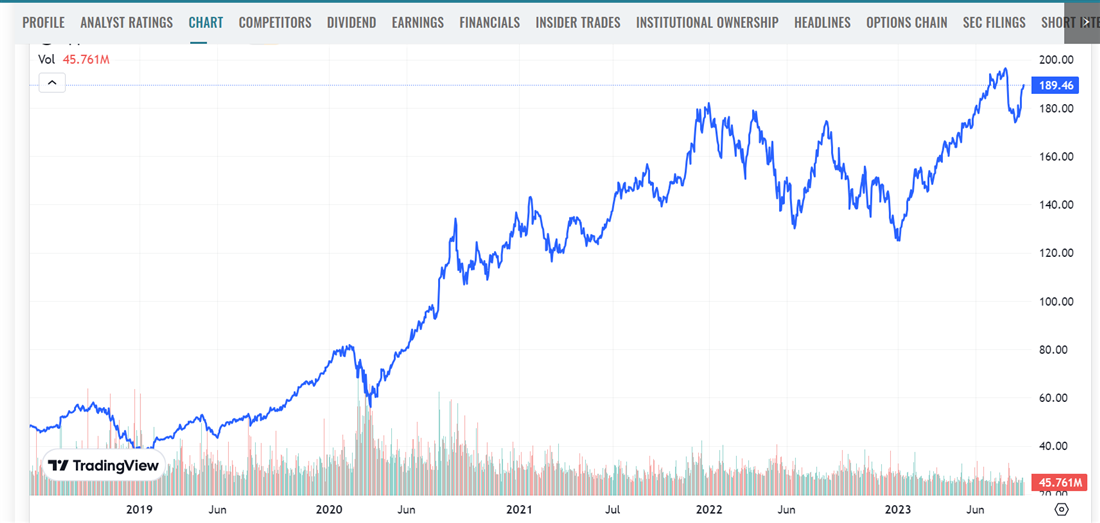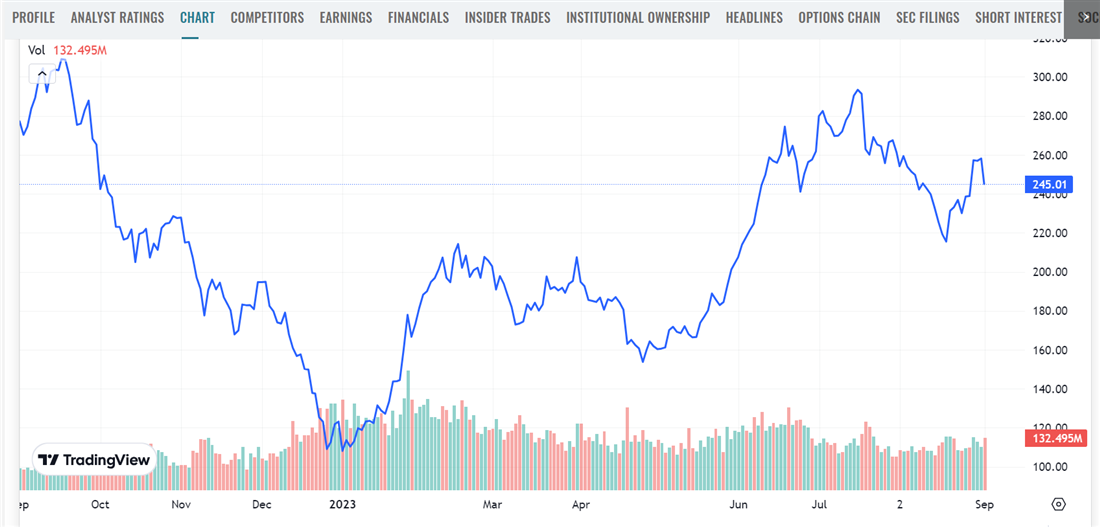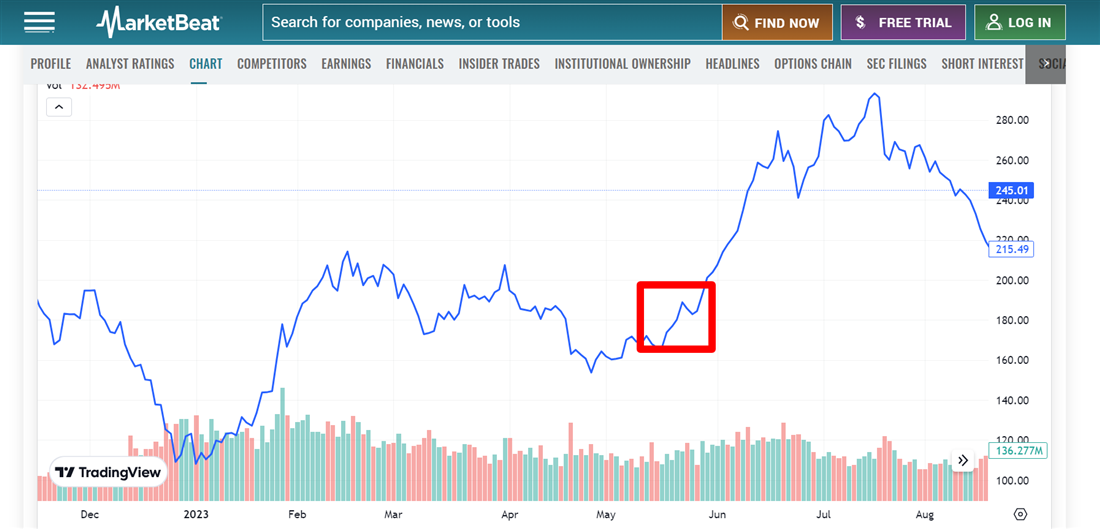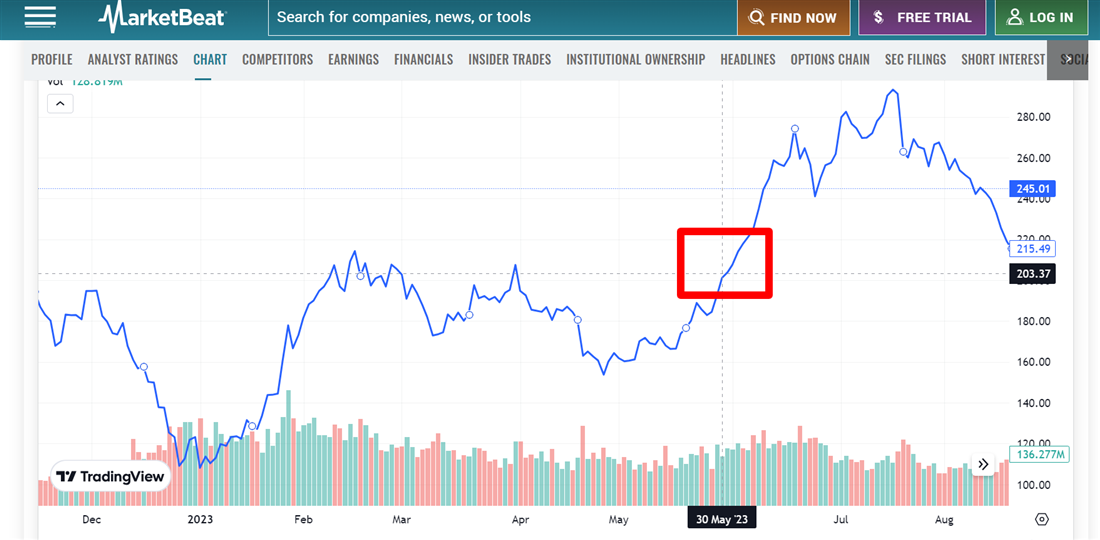As prices rise, investors are aware that surges in value can't possibly last forever, and it can be equally as challenging to predict when a bull market will end as when it will begin. Learning more about the overall bull market definition and planning what stocks to buy in a bull market before it arrives can help put you in a better position to take advantage of favorable market movements.
Read on to learn more about how to invest in a bull market and how to identify it with technical indicators.
What is a Bull Market?
The term "bull market," at its most basic definition, describes a sustained, positive economic movement within a sector or an overall economy. To identify a bull market using technical indicators, you'll look for asset classes or individual companies that have risen more than 20% in value over the past two months. More generally, the term bull market indicates that an asset or class of assets is rising in value consistently over time.
What is a bull market in stocks, specifically? While the term “bull market” is usually applied to the stock market, it’s possible for an individual asset class to have a bull market during an overall bear market.
For example, it’s common for alternative assets like gold to decrease in value while the overall market is in the middle of a bull market. The alternative is also true — gold can act as a bull investment, showing more than 20% increases in value while the stock market has decreased by more than 20%.
Deciding what to do in a bull market and how to invest can be challenging, as identifying a bull market before an asset or class reaches a 20% increase in value requires consistency. A temporary price surge will usually correct itself before a bull market establishes itself. However, you can use a few trading strategies during bull markets, including the buy-and-hold strategy commonly recommended for newer investors whose goal is to learn about the market.
Understanding Bull Markets
While you might understand the basic bull market meaning, understanding what causes bull markets can be more difficult. Bull markets usually come about through financial and psychological factors, which work together to create sustained positive price movements.
A strong and growing economy is a fundamental driver of a bull market. When the economy expands, and corporate profits rise, it creates a positive backdrop for investors. During these periods, consumer spending may also be higher, as unemployment tends to be lower during bull markets. Economic growth often translates into higher corporate earnings, which can increase stock prices. Researching and monitoring economic indicators like GDP growth and total market index movements can help you predict a bull market.
Central banks also play a crucial role in influencing bull markets by controlling interest rates. During economic downturns or periods of uncertainty, central banks tend to lower interest rates to stimulate borrowing and investing. Lower interest rates make fixed-income investments less attractive, prompting investors to seek higher returns in riskier assets like stocks and real estate. Monitoring central bank interest rates can also help you predict when a bull market might approach.
Characteristics of Bull Markets
Identifying the characteristics of a bullish market can help you take advantage of price increases as they approach. The following are some historic bull market examples' most common shared characteristics:
- Rising prices: The signature characteristic of a bull stock market is a trend of rising prices, either within a single sector or throughout the market as a whole. It’s normal for all sectors to see day-to-day price fluctuations, so the term “bull market” is usually reserved for consistent, sustained upward trends that persevere through a few days or weeks of market movements.
- Positive investor sentiment: What does a bull market mean psychologically? During a bull market, optimism and confidence tend to dominate headlines. The start of a bull market fuels investor confidence, which can become self-reinforcing as more investors are attracted to the market, further boosting prices.
- More liquidity: Bull markets are also characterized by periods of higher liquidity, as there are usually more buyers than sellers. Investors who have been in the market for a significant period might be able to use this time to sell stocks they've been looking to get rid of at a more reasonable price.
- Economic growth: Bull markets may coincide with periods of economic expansion, which can further fuel investor confidence and buying activity. Strong GDP growth, low unemployment and rising corporate profits are common characteristics of the broader economic environment during bull markets.
- Increased dividend payments: Bull markets may also coincide with increased corporate profits, so some companies may reward investors by returning a portion of the money in the form of dividends. Special dividend payments may be more common during bull markets — but remember that you must be invested in the company before the ex-dividend date to qualify for payments.
Overall, you can characterize a bull market as a period of renewed investor confidence when a self-fulfilling prophecy partially fuels price increases. As investors see prices rise, they enter the market, creating more demand and increasing prices.
Bear vs. Bull Market
You can consider the “opposite” of a bull market a bear market, when asset prices drop by at least 20% over at least two months. During a bear market, investor confidence is low, and most investors move to protect their capital rather than look for new opportunities for growth and expansion. As a result, investors may rush to sell their holdings, resulting in plummeting prices.
Examples of Historical Bull Markets
A quintessential example of a historic bull market, the Roaring Twenties period of American history occurred between 1921 to 1929. During this iconic bull market, stock markets worldwide saw rapid price increases, with the United States enjoying a particularly robust economy. Widespread economic prosperity, increased industrialization and speculative buying all fed into one another until it ended in October of 1929, marking the beginning of the Great Depression.
A more contemporary example of a bull market occurred in the United States housing market in the early 2000’s. Low interest rates and relaxed lending criteria led to an unsustainable surge in home prices, and adjustable rate mortgages (ARMs) with variable interest rates became popular. Subprime mortgages, which were offered to borrowers with lower credit scores, also became more prevalent.
Throughout the 2000’s, individuals and real estate speculators entered the housing market with the expectation that home prices would continue to rise rapidly. Some investors purchased properties solely to flip them for a quick profit. Homebuilders, seeing increasing prices and demand, rushed to the market to construct homes and capitalize on price movements. The housing bubble eventually burst in 2007 as housing prices began to decline, leading to a sharp decline in the value of mortgage-backed securities and widespread financial instability.
How Long Do Bull Markets Last?
How long can you expect a bull run on stocks to last after it has been identified? On average, the typical bull market lasts around four years. Since 1877, there have been 26 recorded total market bull runs, with some lasting as long as a decade. The shortest bull market occurred following the 2008 global financial crisis, with investors seeing a brief bull market that lasted about one year before the economy took another negative turn and growth slowed.
Strategies for Investing in a Bull Market
The classic advice of buying low and selling high is never truer than during a bull market. As an investor, this is a time to identify opportunities and rebalance your portfolio if needed. According to the principles of dollar-cost averaging, holding stocks through a bull market will result in more consistent and sustainable profits when compared to timing the market.
Let’s look at Apple Inc. NASDAQ: AAPL stock prices over time to illustrate the benefit of buying and holding through a bull market. A recent tech bull market occurred in the recovery period of the COVID-19 pandemic between June 2021 through December of the same year. During this period, Apple’s stock price rose from about $119 a share to $178 per share, representing an increase of almost 50%.

While this bull market eventually ended and prices fell, the price of Apple's stock averaged out over time. In September 2023, Apple’s stock traded at around $189 per share. Investors who panicked at the end of the 2021 bull market and sold their shares did not experience this higher target price. Instead of attempting to catch the top of the bull market, you can hold onto your shares and add more companies with solid fundamentals to your portfolio over time.
What Stocks to Buy in a Bull Market?
While the stocks that are best to invest in might vary depending on the specifics of the bull market, a few sectors tend to do especially well in total market bull runs:
- Growth stocks: Growth stocks are shares of stocks issued by companies that reinvest the majority of their profits back into company operations. Investors are optimistic about the future in a bull market, making growth stocks particularly attractive.
- Tech stocks: Technology companies are known for innovation and rapid growth. They often benefit from increased consumer and business spending on tech-related products and services during bull markets, which you could see during the recent COVID-19 pandemic.
- Consumer discretionary stocks: Bull markets are usually characterized by high consumer confidence and spending, as well as lower rates of unemployment. With more money to spend on items other than necessities, consumers may boost discretionary stocks during a bull market.
Example of Investing in a Bull Market
In addition to buying and holding, you can earn money during a bull market through “momentum investing.” Let’s use the recent bull run in Tesla NASDAQ: TSLA between May and July 2023. During this period, the price of Tesla stock rose from an average value of about $186 per share the week of March 19 to $288 the week of July 19. This bull run represents a total price increase of more than 54%.

You don’t need to catch the bottom of a bear run to take advantage of the momentum investment strategy. An investor who bought $10,000 worth of TSLA in early May of 2023 would pay an average of about $180 per share, receiving about 55.5 shares.

Similarly, you also don't need to catch the “top” of a bull market to see a profit. An investor might want to capitalize on the Tesla bull run but not hold shares of Tesla long-term. In this case, they could set a sell price target of $198 per share — 10% higher than the investor sold the shares. This price was reached in late May 2023, less than a month after purchase.

If the investor were to sell their shares during this period, they would take a profit of 10% of their $10,000 investment — about $1,000. This is an example of how you may capitalize on a short-term price movement without holding stock in your portfolio before the bull run.
Risks of Investing in a Bull Market
Now that you know how to invest in a bull market, you might be excited to start exploring stocks seeing a run in today’s markets. However, you should be aware of the risks of investing in a bull market, which can lead to sharp and sudden losses if not managed.
- Overconfidence: Bull markets can lead to overconfidence among investors, causing them to underestimate risks and make hasty investment decisions. If you decide to take part in a bull run, be sure that the company you’re investing in has solid fundamentals — and avoid the temptation to fall into FOMO.
- Valuation concerns: Bull markets can drive asset prices to levels that exceed their fundamental valuations, leading to quick and sudden corrections and causing losses for investors who purchased at peak prices.
Overall, the best way to invest through a bull market is to focus less on daily wins and losses and keep your eyes on the big picture.
Preparing for a Bull Run
When will the next bull run occur? There is no scientific method to determine exactly when the next bull run will occur and in what sector. Even professional stock analysts may have trouble identifying a bull run until it has already reached a 20% increase in valuation. Instead of timing the market, research solid companies that will add value to your portfolio in multiple economic climates.
Before you make your next trade, you'll want to hear this.
MarketBeat keeps track of Wall Street's top-rated and best performing research analysts and the stocks they recommend to their clients on a daily basis.
They believe these five stocks are the five best companies for investors to buy now...